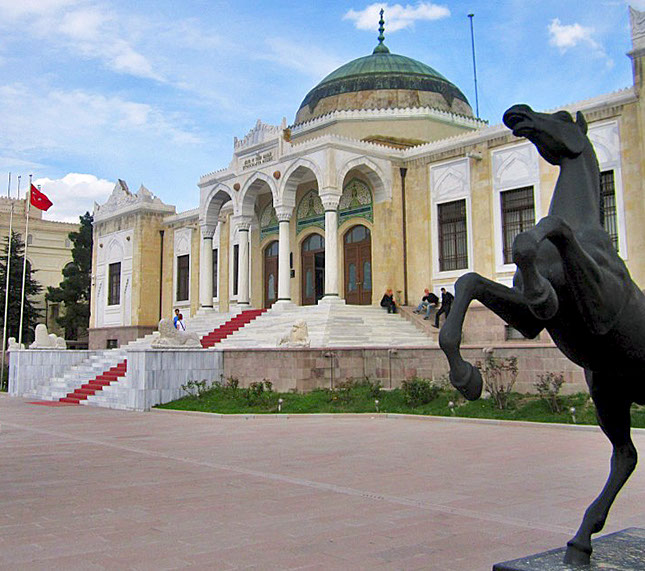Mustafa Kemal Atatürk aimed to develop the Republic of Turkey into a modern country in all senses. The new capital city, Ankara, played a special role in this goal, being the focus point of architectural and institutional renewal. Gyula Mészáros (1883-1957) was the one who proposed the President of Turkey about the foundation of the Museum of Ethnography (Etnografya Müzesi) in 1924. The first director of the institution was Hamit Zübeyir Koşay (1910-1984) who graduated in Budapest and was a member of the Eötvös Collegium. Professor Koşay was both an archeologist and an ethnographer. While putting up the new museum, he relied on the museum practices of Hungary a great deal. The main aim of the institution was to present the folkloristic roots of the Republic of Turkey. The building, inaugurated in 1930, is a typical example of Kemalist architecture. It was designed by Arif Hikmet Koyunoğlu (1888-1982). The importance of the building in Turkish public life is demonstrated by the fact that the coffin of Atatürk was placed here between 1938 and 1953 until the final mausoleum, Anıtkabir was ready.























